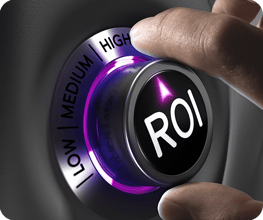
Part 2: Key Focus Areas for Increasing Consumer Engagement and ROI
This blog post is part two of a two-part interview with CPG and retail industry veteran and expert Rob Hand.
In part one, Rob discussed the current state of consumer packaged goods (CPG) and the driving forces of change around revenue growth management (RGM) and the focus by C-suite personnel on integrated business planning (IBP) and trade promotion (TPx).
In part 2, Rob talks about how TPx, RGM, and IBP must lead to an improvement in consumer engagement success and the importance of high-quality data and precise analytics in the achievement of that goal.
ABOUT ROB HAND
Rob Hand is the founder and CEO of Hand Promotion Management (HPM), a consulting company providing domain expertise across more than 25 consumer-facing industries. Focused on consumer products and retail, he has a 45-year history of helping consumer goods manufacturers improve their trade promotion spending ROI, performance analytics, retail execution, consumer engagement efficiency, and marketing effectiveness.
Rob is a frequent podcaster, blogger, and speaker on the topics of revenue growth management (RGM) and business process innovation. He is the author of the recently published and popular book “The Invisible Economy of Consumer Engagement,” which outlines how consumer products goods (CPG) companies can achieve the highest value in both promotion ROI and consumer engagement.
Questions and answers with rob hand
We know consumer behavior is changing rapidly, which puts even more pressure on CPGs and their retailer partners to meet consumer demand. What must companies do to improve overall consumer engagement and ensure they adequately meet that demand as we emerge from the past two years’ pandemic and supply chain crisis and look to the future?
In my book, “The Invisible Economy of Consumer Engagement,” I spent an entire chapter on how the consumer moves through the process of identifying a need, searching for the right product, the right place to buy it, the right price, and the satisfaction level they have with the consumption of that product. As we get more sophisticated in our ability to bring multiple sources of data together, across all key components of the value chain planning and execution processes, we need to better integrate the consumer.
The good news is there is visible movement away from long-standing paradigms in value chain execution. A great example is in trade promotion funding. Instead of simply offering an “incentive” to get the sell-in deal, key account managers are increasing focus on the tactical objective of consumer engagement—a 24% increase over the past four years.1 This is due to the increasing quality and quantity of data and predictive analytics being deployed in promotion planning.
"Decades of siloed data and analytics, planning, technology, and even execution must be aggregated
and consolidated into clean, harmonized, and aligned data with a unification of analytical methods,
processes, and technology."
However, there must be real and meaningful collaborative engagement between sales and marketing organizations within CPGs. To truly understand how to reach the consumer, what I call the “execution arms” of the CPG value chain—supply chain, trade promotion, consumer marketing, and retail execution—must be aligned and in sync in their understanding of the consumer shopping, purchasing, and consumption of their brands and products. Decades of siloed data and analytics, planning, technology, and even execution must be aggregated and consolidated into clean, harmonized, and aligned data with a unification of analytical methods, processes, and technology. Cross-channel sales and marketing plans have to be unified through realistic and accurate outcome models using advanced artificial intelligence and machine learning to test and validate any scenario facing the consumer and the channel partners.
In fact, channel partner collaboration must also meet more vigorous unification and alignment standards. If anything is now evident from the COVID-19 nightmare, it’s that we cannot rely on the assumption of business as usual in long-standing paradigms of distribution and consumer engagement.
These siloed and unique business processes, metrics, and technology are the driving reasons for the difficulty in corporate annual business planning, or what we are all calling integrated business planning. The sheer weight of time and expense in the IBP process of achieving any consensus is due to the efforts to assemble this data puzzle into one unified definition of outcomes that not only drive revenue growth but also prescribe actions that have to be taken when market deviations occur.
1 2022 HPM Survey on Trade Promotion
High-quality retailer data and analytics are critical to ensuring optimal RGM. What changes do you see happening around the use of data and analytics to drive optimal RGM and in turn, consumer engagement success?
Of course, the consumption analytics provided by syndicated data providers is always a critical piece of the intelligence needed to be successful at growing revenue. The same is true for supply chain, demand planning, instore retail execution, and consumer research.
However, we are seeing more CPG suppliers go directly to the retailers for POS data—the gold standard for how, when, where, and why the product sells at retail. There are three reasons for this.
First, going direct to the retailer provides 100% coverage of all retail locations. While some CPGs continue to believe that representative sampling is good enough, our scenario modeling experience shows that not to be the case. Critical intelligence about the sale of the product is lost without full location coverage.
Second, most retailers can generate and upload data overnight, which means the data being analyzed by the key account executives and marketing teams is less than 24-hours old. Combined with real-time audits from instore merchandising reps, you can see how the products and promotions are performing in time to make appropriate adjustments or even stop a disastrous promotion before it burns the trade dollars.
Third, the timelier assessment of total channel purchases enables greater visibility into consumer loyalty because the shopping and buying patterns are more complete. In the variability of demographic and generational preferences, a smart marketing organization can quickly identify the anomalies to build a more accurate and trustworthy picture of consumer engagement. If there is ongoing and effective collaboration across the value chain business organizations, as well as the channel partners, the predictability of success is higher.
As the RGM teams are expanding their roles and responsibilities, knowing what the consumer is buying in near real time is going to be even more crucial than ever. Aligning this intelligence with e-commerce and consumer shopping data enables a virtual 360-degree view of the consumer and a better chance of configuring a plan to better engage them at any point in their shopping regimen.
What other data sources are CPGs integrating into their decision-making processes?
In our most recent survey, we asked about that. In fact, what we know as the primary data sources—demand plans and baselines, POS data, and syndicated consumption analyses—are being augmented by retail execution audit results (28.6%), coupon performance analyses (22.9%), S&OP analytics (19.8%), and competitive promotion activity data (16.6%).2 In addition to these data sources, we are seeing an increase in consumer marketing, e-commerce, logistics, and transportation data and warehouse inventory status.
POS data is critical, no doubt. However, there are so many variables to be considered in planning for revenue growth and CPG suppliers are beginning to see the value in focusing on the decisions the consumers are making in advance of the shopping trip.
To achieve this level of intelligence will require data outside the POS sources as well. This will include extracting consumer shopping and purchasing data from external consumer research, product and marketing A and B testing results, instore consumer traffic and movement data, household financial and employment statistics, and cross-product purchasing patterns, to name just a few. This is where and why sales and marketing collaboration is so critical to the development of the IBP sales forecast, demand planning, and supply chain logistics. All of this is required to build advanced scenario models that can be used to optimize the IBP process. Also, as the plan progresses throughout the year, leading CPGs must build stronger analytics and more effectively measure results in near real time. We see that happening today in modern trade, but leading CPGs and retailers must make this a higher priority than it is today.
"We know that with better and more precise data that can be injected into the scenario models, the more accurate and trustworthy the outcomes."
All these data sources and more will be required for the future modernization of advanced prescriptive planning. We know that with better and more precise data that can be injected into the scenario models, the more accurate and trustworthy the outcomes. To fully understand and impact each key step in the consumer’s chain of thoughts and plans to buy will require far more complex modeling—but the end result has to be higher and consistently more accurate ROI.
2 2022 HPM Survey on Trade Promotion
In your book, you talk about the cost of data. Have you seen changes in the views on the cost of data from either CPG or retail leadership?
Yes I have.
For CPG companies, the decades-long idea of enablement of bottom-up P&L development by enabling full management control at the business unit levels may have produced effective results in the past, but it has also led to this heavily siloed database and analytics technology environment we have today. I have seen too many situations where the IT organization which is supposed to have full operational control of technology and data has limited or even no control of the flow of data—especially the critical data used to develop the demand plans, sales forecasts, sales promotions, and corporate marketing plans.
This is one of the highest areas of cost frustration and a leading cause of pain in the entire business planning process. Not only does this create dangerous overlaps in data and intelligence, but it can also prohibit unified and aligned metrics that ultimately lead to a business plan that drives the company in the wrong direction.
What I am seeing now is a global enterprise-wide effort to identify and reduce this siloed data and analytics infrastructure to get to this level of unified and aligned data integrity and quality. It is going to take time and money to make sure the data foundation is strong.
The point here is that the arguments about data, and therefore, the cost of the data being made to CFOs, are hitting their marks. What advanced analytics brings to the table, especially when it comes to the accuracy and dependability of the consolidated and integrated business planning, is the resurgence of the old adage “garbage in, garbage out.” The high value of data science is worthless if the data is bad. This is becoming a more easily proven factor, especially given that near real-time POS is available, and the combination of data from the distribution center, warehouse, and onsite audits can and do cut the occurrence of out-of-stock conditions dramatically. And remember, out-of-stock conditions occur in 15% of the promotions, according to latest data, so it is still a major problem.
Retailers have always had access to the more direct consumer shopping intelligence, including store visit data, instore traffic, visual responses to displays, and so on. But they also have growing concerns about security, stock-outs, supply logistics, and of course, prevention of loss of shoppers to the e-commerce channels. We are seeing the larger retailers, like Kroger, depend upon their data and analytics partner, 84.51, to provide deep consumer analytics, but many other regional chains are starting to partner with each other to improve their buying positions and combine data and analytics to provide stronger consumer engagement analytics.
Retailers are also beginning to lean more on new collaborative efforts with their suppliers to gain more global knowledge about consumer reactions to promotions, supply chain issues, and new product evaluations. These new ways of working together benefit both sides of the channel and contribute to the overall improvement of sales, logistics, and consumer engagement.
When you consider the cost of failure and the cost of making all these improvements in the precision and trust of data, the cost of making these improvements becomes a much more justified purpose.
Finally, what are the top issues you expect to see overall for CPG and retail in the near future?
One thing the pandemic taught us was that the consumer rapidly adapts to any market condition that threatens the personal and household purchase and consumption of products. So, in the areas of improving consumer engagement, we are seeing a definite trend toward higher and more effective collaboration between sales and marketing organizations within CPGs. More importantly, we see this happening between the CPG manufacturers and suppliers and their retail and distribution channel partners. This must continue to happen.
This is linked to the importance of more effective consumer engagement as a major objective of promotions, as well as a more homed-in focus of IBP. Ensuring better alignment between trade promotions and corporate direct-to-consumer and e-commerce marketing signals a significant paradigm shift in overall RGM.
A “must-have” for CPGs is the automation of the IBP process. When you consider that it takes so long to collect, consolidate, clean, align, harmonize, and reconcile the data and output from all these siloed analytical tools, it is no wonder why it takes so much time before you can even begin the tedious job of creating the building blocks to achieve the annual plan and forecast. In addition, the need to provide real-time monitoring of the entire corporate value chain is becoming as important as the IBP process function, which is driving the need for advanced “what if” models to predict and take action on everything from hurricanes to pandemics—and we’ve all seen that, have we not?
I also want to see the dependence upon spreadsheets eliminated. I have seen some very sophisticated and well-designed spreadsheet systems for tracking everything from trade funds to post-performance analyses, but they have to go the way of the abacus—it was useful in its time, but there are better and more intelligent, cost-effective methods today. According to our recent survey, 49% of CPG companies still use spreadsheets as their primary promotion planning tool.
Retailers must share more consumer shopping data with their CPG suppliers such as loyalty, shopper traffic patterns, demographic impact, and stocking issues. Likewise, the manufacturer or supplier needs to work closely to develop collaborative data sharing and analysis of global consumer sales and promotions, supply logistics, and new product launch results.
To me, it’s all tied together. Data quality and integrity leads the way to smarter, more productive consumer engagement, better product and brand execution in the channels, and more immediate, precise, and trustworthy intelligence across CPG and retail. Consolidating the end-to-end value chain operational and execution intelligence and automation of the IBP process will be critical. And CPG companies which can create these intelligence-generating environments and enable rapid, effective, and comprehensive integrated business plans will find themselves in category leadership positions for the foreseeable future.
If you'd like to learn how the highest quality data and most precise analytics can help you achieve optimal consumer engagement, contact us today.



